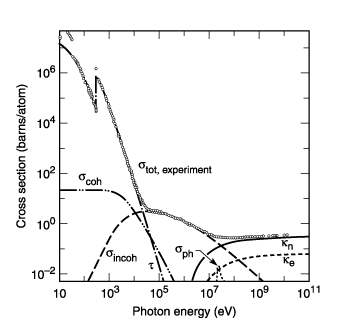In particle physics there exists elastic scattering for all interactions: change of direction but not of energies.
When a photon penetrates into a medium composed of particles whose sizes are much smaller than the wavelength of the incident photon, the scattering process, also known as Rayleigh scattering, is also elastic. In this scattering process, the energy (and therefore the wavelength) of the incident photon is conserved and only its direction is changed. In this case, the scattering intensity is proportional to the fourth power of the reciprocal wavelength of the incident photon.
How probable it is to be reflected by 180degrees would be a matter for a specific calculation, not for the weak in mathematical skills and numerical methods. It all depends on the boundary and the atoms/material which is the target for scattering. It is still a matter of active research to calculate the cross sections for such processes.
The nonrelativistic limit of Rayleigh scattering amplitude on 2s electrons of neutral and partially ionized atoms is obtained by making use of the Green Function method. The result takes into consideration the retardation, relativistic kinematics and screening effects. The spurious singularities introduced by the retardation in a nonrelativistic approach are cancelled by the relativistic kinematics. For neutral and partially ionized atoms, a screening model is considered with an effective charge obtained by fitting the Hartree-Fock charge distribution with pure Coulombian wave functions corresponding to a central potential of a nucleus with Z eff as the atomic number. The total cross section of the photoeffect on the 2s electrons is also calculated from the imaginary part of the forward scattering amplitude by means of the optical theorem.
Edit ,Replying to comment and additions to question
Is the photon ejected after collision is the same photon which was thrown in if not what happened to the previous photon and what is going on with the energy involved with previous photon in the above mentioned situation as energy cannot be absorbed.
You have to realize that elementary particles are indistinguishable except for their quantum numbers. There is no naming for individual electrons or photons so it does not make sense to talk of what happened to the "previous photon". Generically you can say that an elastically scattered photon is the "same" photon with the same energy E=h*nu . An inelastically scattered photon changes by giving up part of its energy to the crystal or the atom or the electron (kicking it out of its bound state) . A totally absorbed photon, if it has kicked an electron to a higher energy level, disappears from the picture its energy absorbed and its quantum numbers balanced in the reaction
When this photon collides (perpendicularly) at that very moment of collision is it at rest?
A photon can never be at rest, it is always traveling with velocity c in all inertial frames one can cook up. It is either absorbed or scattered . The probability of this happening is predicted by QED calculations, depending on the boundary conditions of the problem.
EDIT2 replying to comment:
the way a ball bounces back from a totally elastic wall, even classically it is not at rest" would you show me graph of speed of the ball vs time. and if i ask a gentle question What is the speed of ball(and photon) at the very moment of collision(t=t0). As i understand v=dx/dt at (t=t0) it is discontinues how can you say the speed of photon is c at t=t0
Let us not confused the vector velocity, which does change, with speed, which is a scalar and for the photon has the same value always. It is discontinuous at exact t=o classically though. In the classical case of the ball one would use delta functions to describe what happens at the impact on the vector going to infinitesimal times and space locations. At that point one would reach the quantum mechanical domain and with some very complex equations one would be able to describe t=0, with a delta(t) due to the Heisenberg Uncertainty principle. The speed of the ball will be the same after that delta( t), ( from energy conservation of the total elastic scattering) the velocity in the opposite direction.
Quantum mechanically there are Feynman diagrams that describe the interaction of photons with matter,where at the point of "contact" with the fields of the atoms the photon is "absorbed" to a virtual electron and then re emitted. Virtual means the electron is off mass shell, its " rest mass" different from zero for the electron. Once the photon is scattered it is on mass shell again, with rest mass=0 and speed c. Have a look at this chapter to understand the complexity of the matter. And here is a link with calculations and Feynman diagrams for elastic (Thomson and Ra)yleigh scattering.

